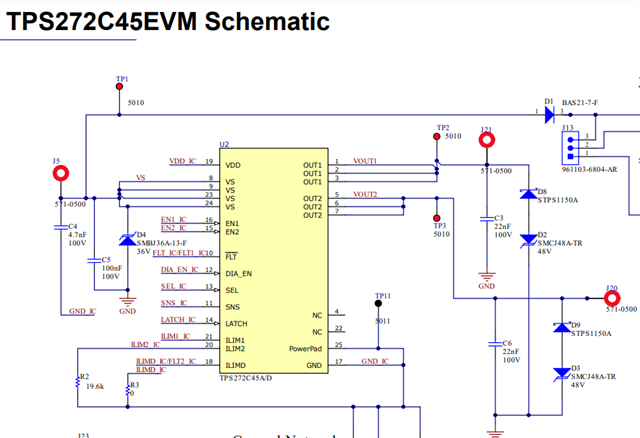Other Parts Discussed in Thread: TPS1HC30-Q1, TPS272C45
Hello,
I am using a high-side driver (TPS1HC100-Q1) to drive an inductive load.
The single pulse turn-off energy for this high side driver is 35mJ.
But, energy stored in the inductor is much higher than this.
So, while turning off the high-side driver there is high probability that the driver would get damaged.
I am planning to use an external TVS diode connected across the drain and source of the high-side switch with lower clamp voltage compared to the high-side switch as a work around.
Not sure if inductance of the leads and tracks would allow the current to switch from the high-side driver to the TVS diode when the high side driver turns off.
Request your comments on this.



